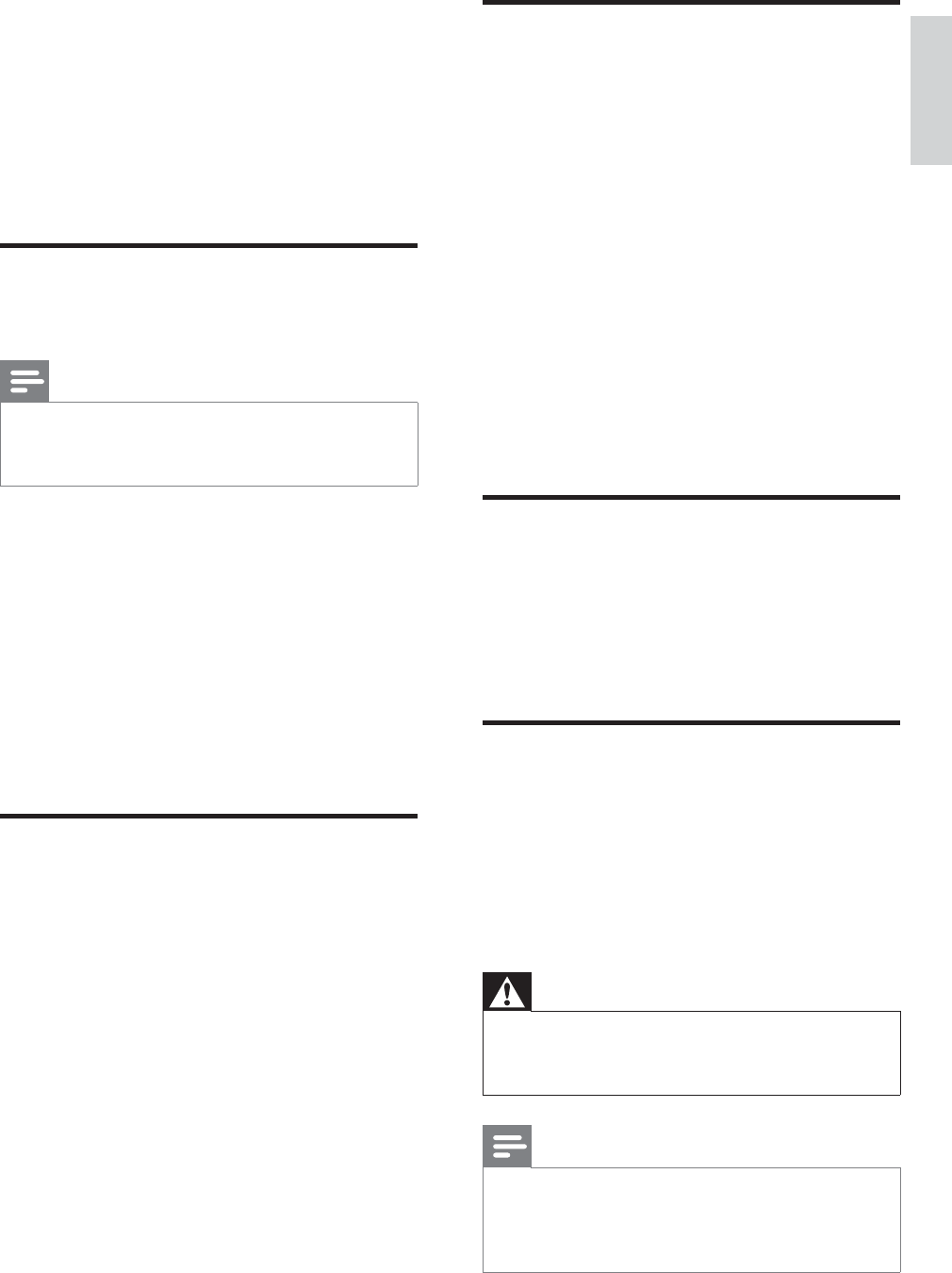
33
USB connection issues
USB device content is not displayed:
Check that the USB storage device is
set to ‘Mass Storage Class’ compliant,
as described in the storage device’s
documentation.
Check that the USB storage device is
compatible with the TV.
Check that the audio and picture À le
formats are supported by the TV.
Audio and picture À les do not play or display
smoothly
The transfer performance of the USB
storage device may limit the data transfer
rate to the TV, causing poor playback.
Computer connection issues
The computer display on the TV is not stable:
Check that a supported resolution and
refresh rate is selected on the computer.
Set the TV picture format to unscaled.
Contact us
If you cannot resolve your problem, refer to
the FAQs for this TV at www.philips.com/
support.
If the problem remains unresolved, contact
Philips Consumer Care in your country as
listed in this user manual.
Warning
Do not attempt to repair the TV yourself. This
may cause severe injury, irreparable damage to
your TV or void your warranty.
•
Note
Make a note of your TV model and serial
number before you contact Philips. These
numbers are printed on the back of the TV
and on the packaging.
•
•
•
•
•
•
•
The picture does not À t the screen; it is too
big or too small:
Try using a different picture format.
The picture position is incorrect:
Picture signals from some devices may
not À t the screen correctly. Check the
signal output of the device.
Sound issues
There is a picture but no sound from the TV:
Note
If no audio signal is detected, the TV
automatically switches the audio output off
— this does not indicate malfunction.
•
Check that all cables are properly
connected.
Check that the volume is not set to 0.
Check that the sound is not muted.
There is a picture but the sound quality is poor:
Check that the sound settings are
correctly set.
There is a picture but sound comes from one
speaker only:
Verify that sound balance is set to the centre.
HDMI connection issues
There are problems with HDMI devices:
Note that HDCP support can delay the
time taken for a TV to display content
from a HDMI device.
If the TV does not recognise the HDMI
device and no picture is displayed, try
switching the source from one device to
another and back again.
If there are intermittent sound
disruptions, check that output settings
from the HDMI device are correct.
If a HDMI-to-DVI adaptor or HDMI to
DVI cable is used, check that an additional
audio cable is connected to AUDIO L/R
or AUDIO IN (mini-jack only).
•
•
•
•
•
•
•
•
•
•
•
English
EN


















